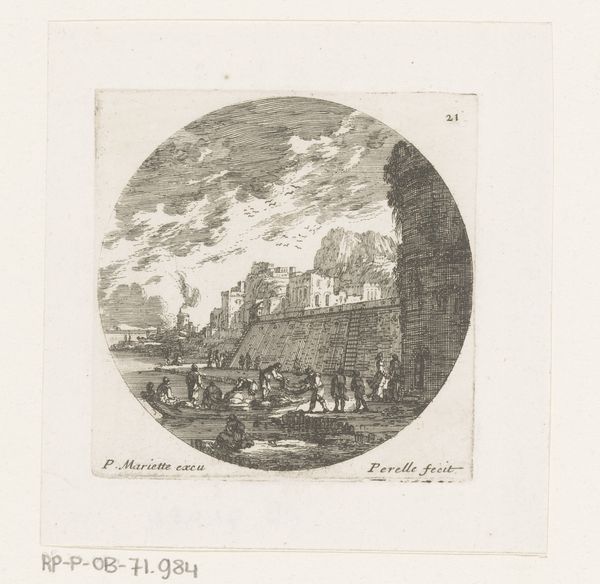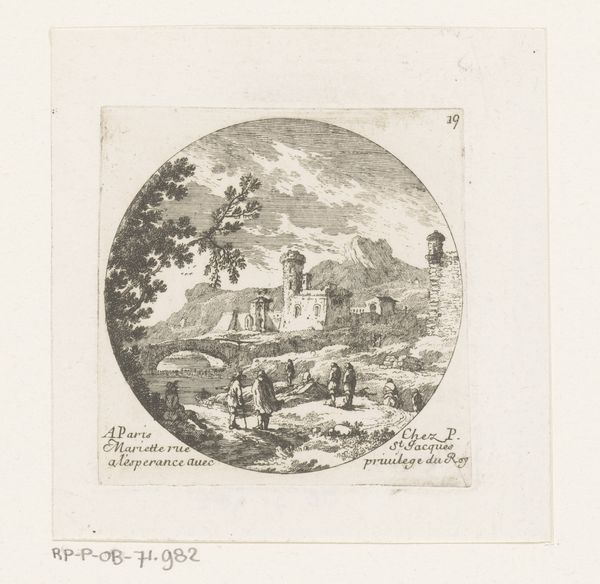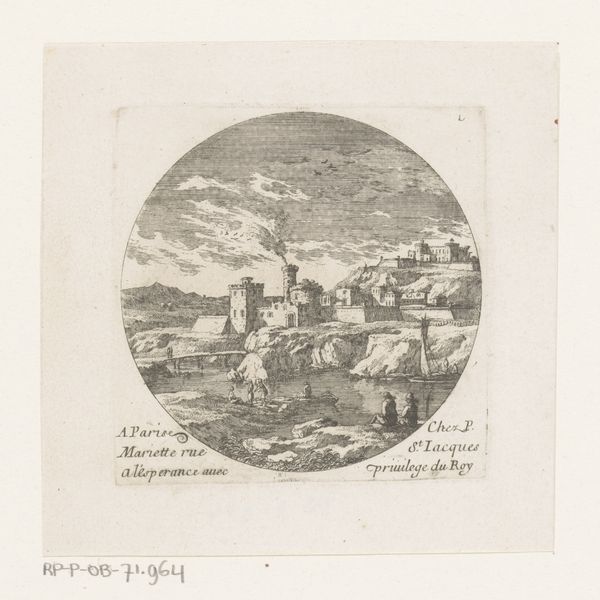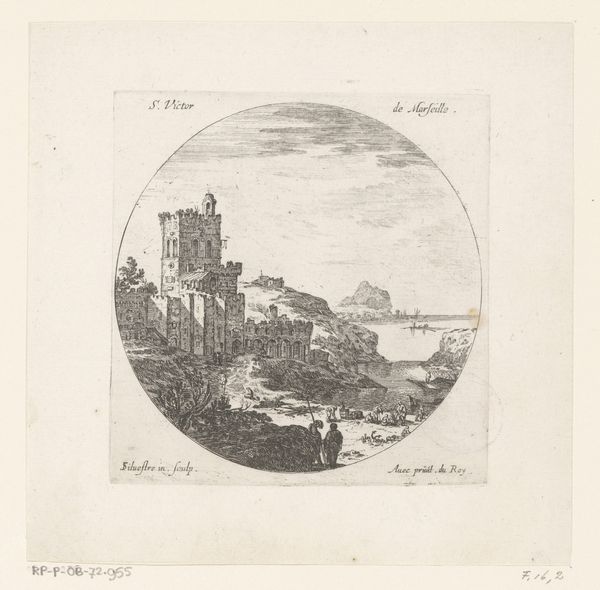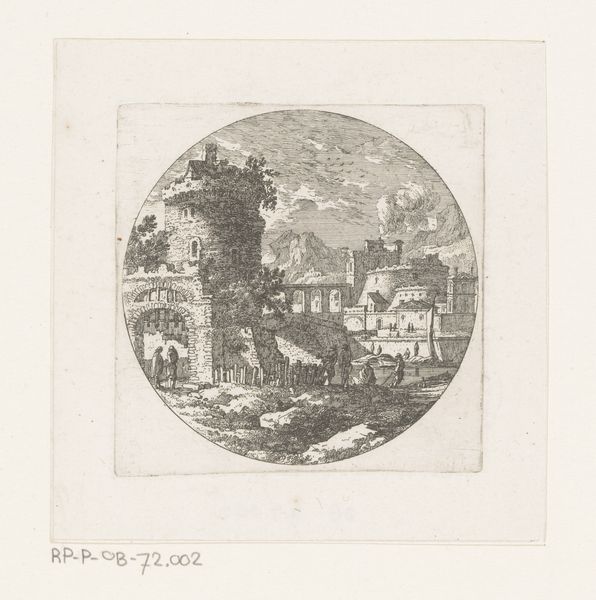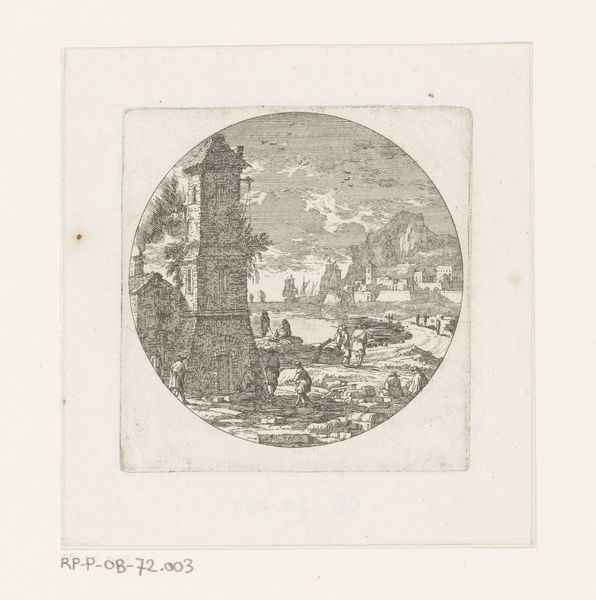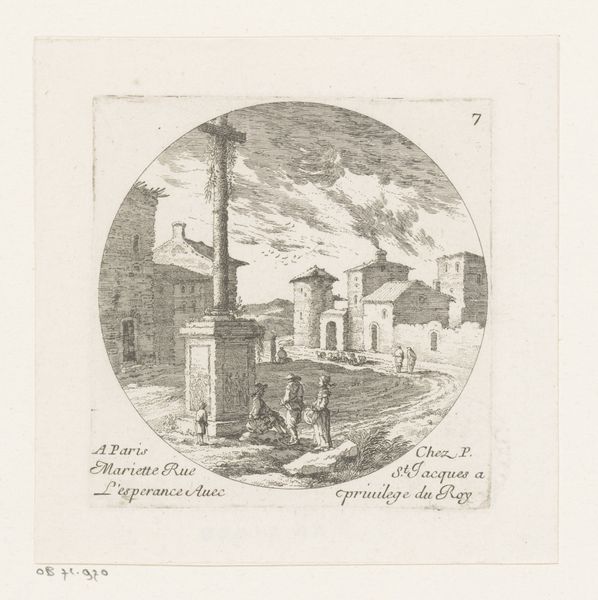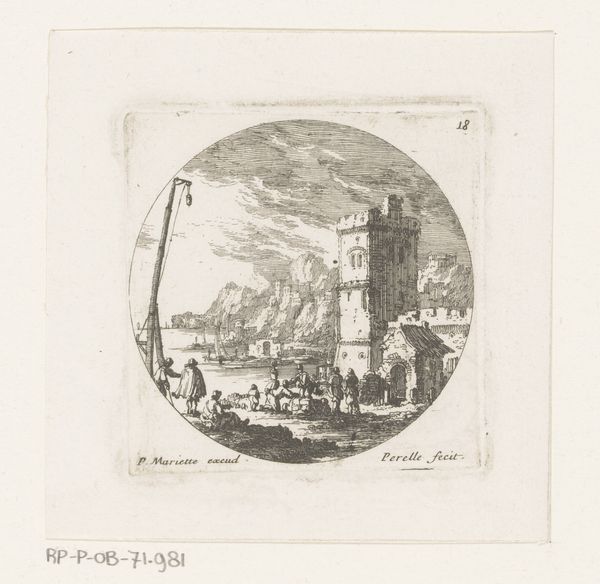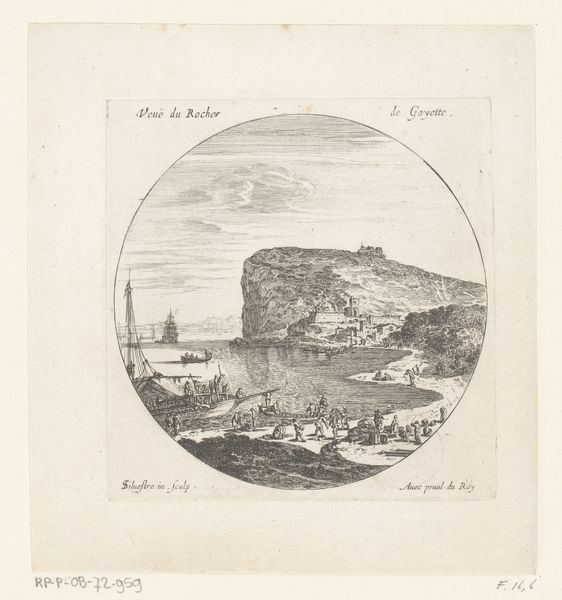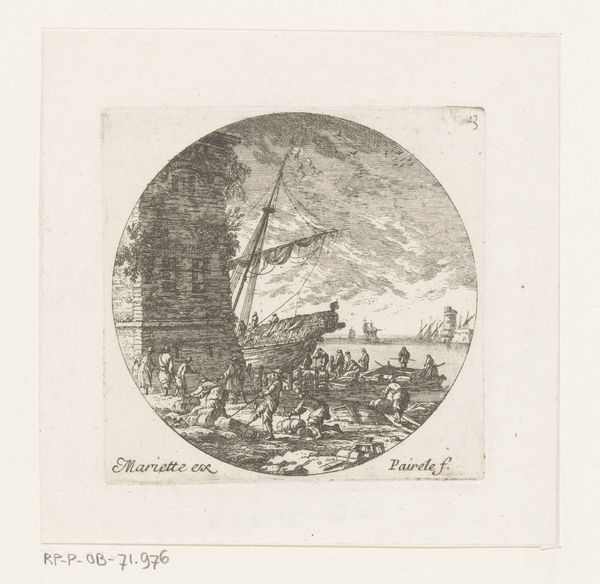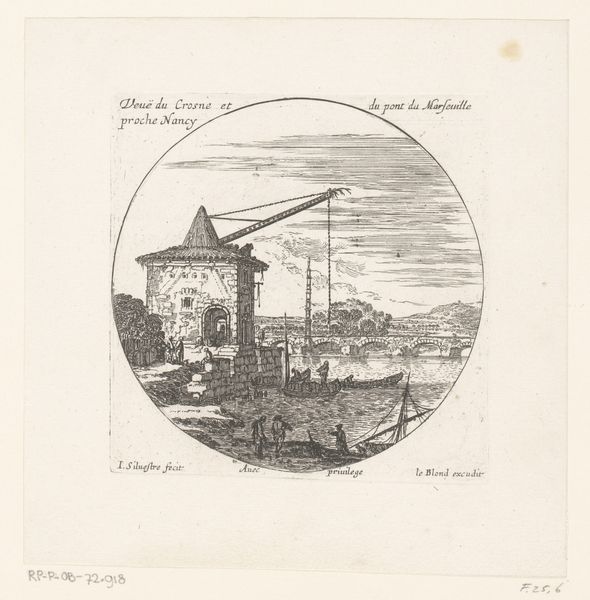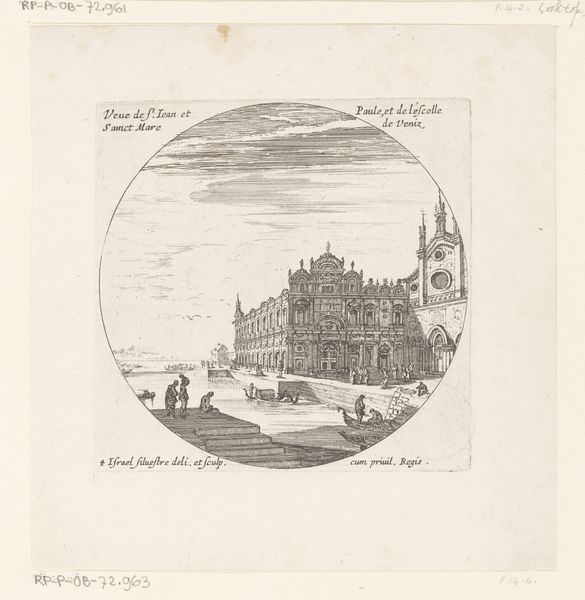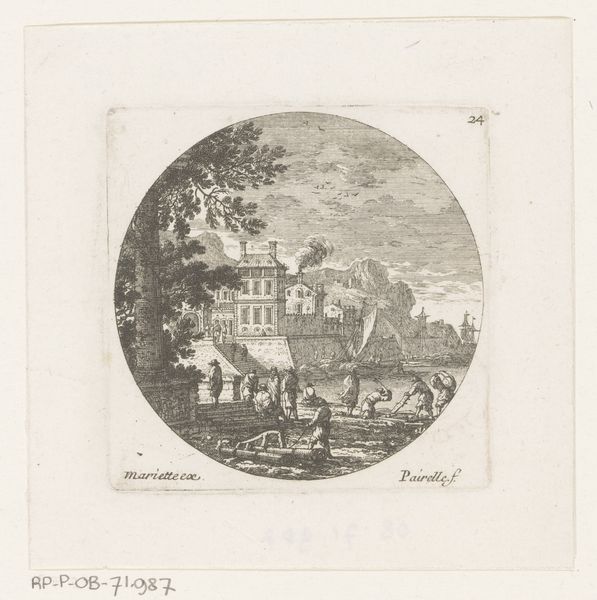
print, engraving
#
aged paper
#
baroque
# print
#
old engraving style
#
landscape
#
cityscape
#
engraving
Dimensions: height 99 mm, width 98 mm
Copyright: Rijks Museum: Open Domain
Editor: This is "Figuren bij ruïne van een poort," or Figures by a Ruined Gate, an engraving by Nicolas Perelle, created sometime between 1613 and 1695. It’s at the Rijksmuseum. The composition is very striking with its circular border and contrasts between the crumbling structures and the figures. How do you interpret this work? Curator: The most compelling aspect lies in the meticulous rendering of textures and forms. Notice the variation in line weight used to depict the crumbling stone, evoking a sense of decay and the passage of time. Consider also the spatial organization: the artist employs a sophisticated understanding of perspective, guiding the eye through the depicted cityscape. How does this perspectival structure impact your interpretation of the print? Editor: I see what you mean. The lines draw you in. But I initially saw just a crumbling city, not decay exactly. Curator: Precisely! And how does the limited tonal range influence your perception of depth and volume within the composition? Observe how the areas of denser hatching create a sense of shadow, effectively modeling the architectural forms. Editor: The light and shadow give depth to it and help give it shape. And I hadn't noticed before that it leads the eye back towards the spire. Curator: Indeed. It's a remarkable study in the power of line and composition. The artist created form and depth without color. I appreciate the artist's strategic and methodical approach to the spatial composition within the pictorial space. Editor: Thanks. Looking at it from your perspective, it does seem like the power of the engraving really shines through in its details. Curator: Exactly. Close visual analysis illuminates an artwork's internal structure and overall meaning, apart from what we know about its historical context.
Comments
No comments
Be the first to comment and join the conversation on the ultimate creative platform.
